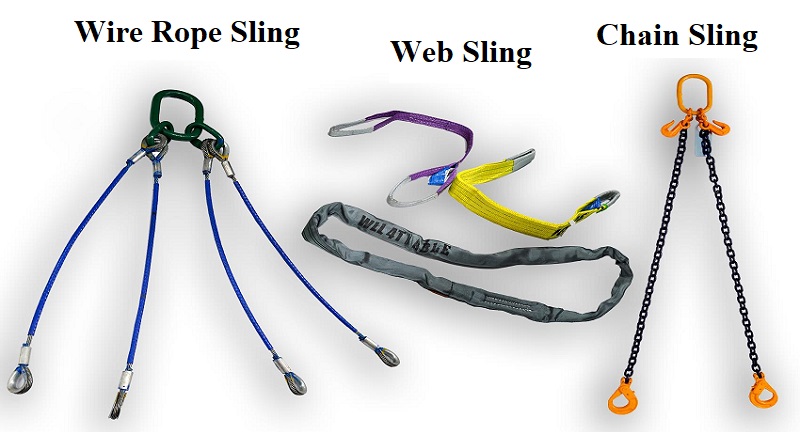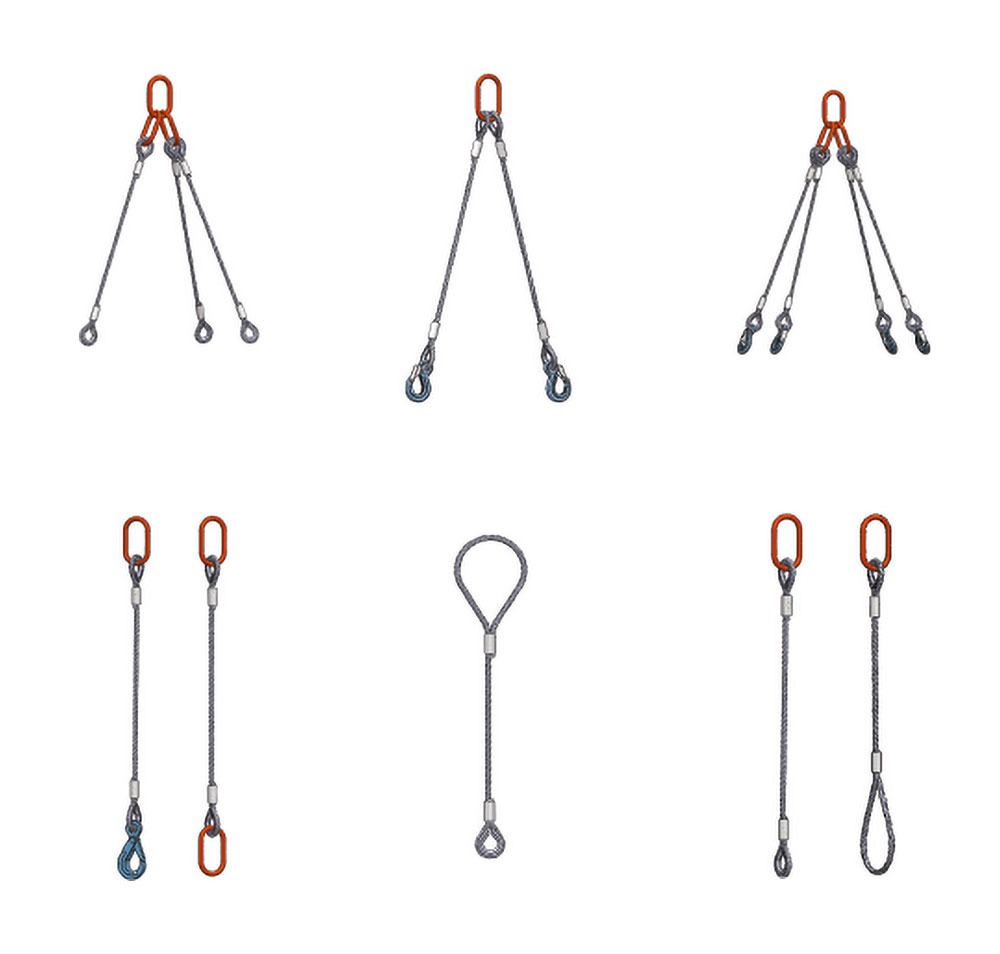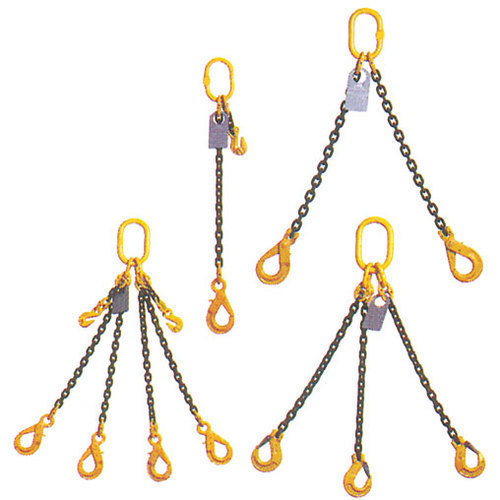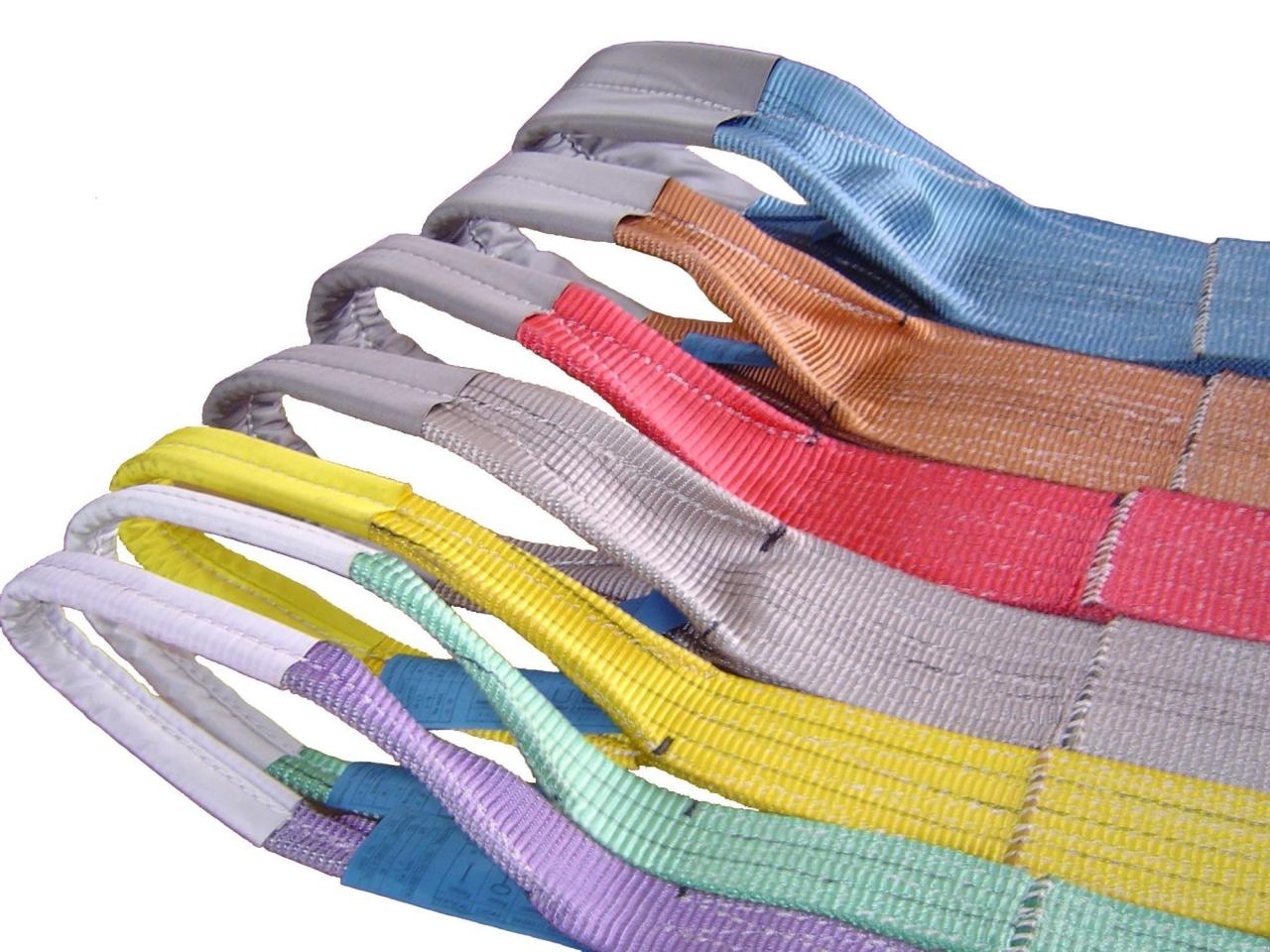how many types of slings are there?
The Lifting slings is an essential part of the overhead lifting process. When you have a heavy pallet of bricks or a bundle of steel frames that need lifting, you can’t just attach the load to a hook on the crane and begin the lift. Most heavy materials are not specifically designed to be lifted by a crane, so it is the sling’s job to secure the load and provide an easy attachment point for the lifting mechanism.
As there are many different objects that need lifting, there are also many different types of slings to suit these objects. Though there are dozens of unique slings on the market, they generally fall into three main categories: synthetic, chain, and wire rope.

1. Web sling
For most general lifting applications (for instance, warehouse facilities), web slings are more than adequate thanks to its lightweight and flexibility. Web slings are also easy to use and can be fitted under any load.
Primarily, you will find web slings made of two materials – nylon and polyester. While nylon has better shock absorption, polyester provides better load control. Nylon slings are mostly used in applications with oil, alkaline, and grease, but are not suitable for acids and bleaches. Polyester slings can be used with common acids and bleaches, but not with concentrated acids.
Advantages of web sling: Lightweight, economical, flexible, easy to use, water and rustproof.
Disadvantages of web sling: Unsuitable for heavy loads and high temperatures, breakdown due to exposure to UV radiation, short product life.
2. Wire rope sling

As the name suggests, wire rope slings are made of steel wire strands braided into a rope. As compared to other slings, wire rope slings have the least cost for each ton of load. Along with resistance to abrasion and high temperatures, nearly 400-degree Fahrenheit, these slings are better suited for heavier loads and rugged facilities like construction sites.
However, because of their heavier weight, they are harder to use than web slings and can cause minor injuries. Wire rope slings are also prone to damage from kinking, abrasion, and crushing. As a result, they need to be inspected regularly for any damages.
Advantages of web sling: Medium weight, economic, high temperatures, abrasion, and UV resistant.
Disadvantages of web sling: Inflexible, can cause minor injuries, prone to damage.
3. Chain sling

Among the three types of slings, chain slings are the most suited for industrial applications and heavy load lifting. As a result, chain slings are extensively used in steel production plants and environments operating at high temperatures (up to 400-degree Fahrenheit). Chain slings are designed for continuous use, all thanks to their durable strength and long life. They are also more suited to be used in facilities with harsh conditions like foundries and heavy machine factories.
Advantages of web sling: Strength, durability, heavy loads, long life.
Disadvantages of web sling: Heavy, higher purchase cost, difficult to handle.
How to select Lifting Slings?
China’s hoisting and rigging industry is developing rapidly, but the technical standards are very imperfect. Due to the random production of hoisting rings by domestic enterprises and even arbitrarily reducing the safety factor, there are great hidden dangers in China’s hoisting safety. Although the relevant standards are gradually improved, we can not deny the existing problems in the safety of Lifting Slings.
All personnel working in the lifting industry should know the lifting slings, which mainly include metal lifting slings and synthetic fiber lifting slings. Metal slings and riggings mainly include wire rope slings and riggings, chain slings and riggings, hoisting webbing slings and riggings, etc; Synthetic fiber slings mainly include rope and webbing slings, and ropes are divided into nylon, polypropylene, polyester and high strength and high modulus polyethylene fibers.
So how do you understand the lifting, rope and sling in the lifting sling? Therefore, means crane represents hoisting, the cable represents connection, and the tool represents tool, i.e; Hoisting is a tool connected together. Let’s introduce how to choose the right sling.
First: choose rigging from concept
Steel wire rope rigging is processed with steel wire rope as raw material. It mainly includes phosphatized coated steel wire rope, galvanized steel wire rope and smooth steel wire rope. It is used for hoisting, traction, tensioning and bearing. It has the characteristics of high strength, light weight, stable operation and not easy to break suddenly. It is widely used in iron and steel, chemical industry, transportation, port and other industries.
The chain rigging is made of metal chain links. According to its formation, it mainly includes welding and assembly. According to its structure, it adopts high-quality alloy steel. Its outstanding characteristics are wear resistance, high temperature resistance, low ductility and no elongation after stress. It has long service life and is easy to bend. It is suitable for large-scale and frequently used occasions. Flexible multi limb and various combination forms can improve work efficiency and reduce cost.
The complete set of sling consists of main lifting ring, link shackle, lifting belt and metal end components. The main lifting ring includes long lifting ring, round lifting ring, combined lifting ring, etc. The connecting shackle includes bow shackle, chain shackle, etc. the lifting belt includes flat belt and circular belt, and the metal end includes various hooks and other metal parts. The complete set of sling can be optimized and combined freely according to the needs of customers.
Second: select the sling from the use precautions
Attention for hoisting of wire rope rigging: if it is a single leg hoisting belt, the hoisting point must be vertically above the center of gravity of the lifted object.
In case of double leg lifting, the lifting point shall be located on both sides of the goods, and the hook shall be above the center of gravity of the lifted object.
In case of three leg or four leg lifting, the lifting point must be evenly located on the plane around the goods, and the hook must be directly above the center of gravity of the object to be lifted. Note for lifting with sling: please pay attention to the relationship between the included angle and the bearing tonnage during use. If the sling used in the complete set of sling is damaged, it can not be used to avoid impacting or vibrating the load.
The safety factor is 4:1, specifically 5:1 or 6:1, which shall be used within the safety factor range.
Attention to hoisting of chain Lifting Slings: the chain shall not be knotted or twisted during use, and the hook tip shall not be used for load. The normal working temperature of chain Lifting Slings is – 40 ° to + 200 ° C. for single leg Lifting Slings, the hoisting point shall be vertically above the center of gravity of the lifting object; 5. 3 in case of two leg Lifting Slings, the hanging point shall be located on both sides of the lifting object and above the center of gravity. In case of three leg and four leg Lifting Slings, the hanging point shall be evenly located on the level of the center of gravity of the lifting object and above the center of gravity of the object to be lifted.
